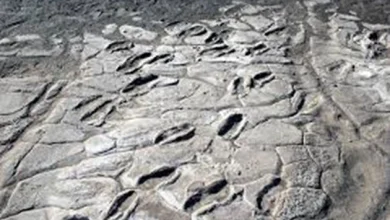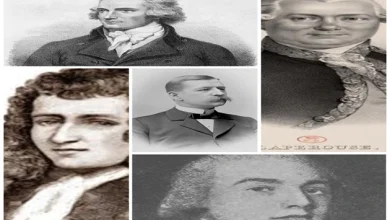When life is scarier than a fairy tale: Beast of Gévaudan
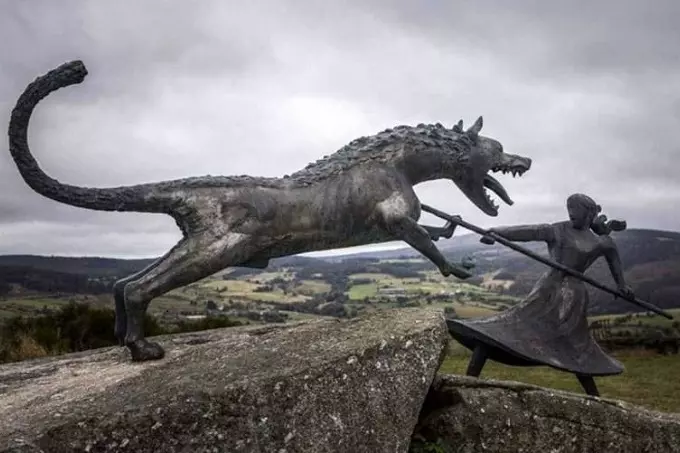
Since ancient times in many countries, you can hear stories about monsters that literally terrorized entire areas and inspired terror not only the children but also the adults. The story of the Beast of Gévaudan.
One such story occurred in the French district of Gévaudan in the Languedoc province in the second half of the 18th century. The monster that appeared there is neither a legend nor a myth. For three years (1764-1767), officially called the “Years of the Beast” in France, the unknown monster terrorized the population of the area.
Numerous sources document 230 cases of attacks on people by a huge, remotely wolf-like animal. From 60 to 123 people (according to various authors) were then killed by the “Beast”; their names were recorded in the parish registers of the county. Such a discrepancy in the number of dead is explained by the fact that some authors considered people who disappeared without a trace in the surrounding woods at the time as victims.
The main tragic events took place in the Margeride Mountains, on the border of Auvergne and Languedoc.
The Beast of Gévaudan
What did the Beast of Gévaudan look like? According to eyewitnesses who survived, it was about the size of a large calf, had an elongated muzzle like that of a greyhound, a very broad chest, a long tail with tassels, rather like that of a cat, and large fangs protruding from its mouth. The fur of the Beast was yellowish red with a dark streak along the backbone.
Some eyewitnesses recalled dark spots on the back and sides. One left this description: “The vile creature was a little smaller than a donkey, with a broad chest, a huge head, and a thick scruff; its ears resembled those of a wolf, only a little longer, and its snout like a boar’s snout.”
Another description: “The body of the Beast is elongated, he presses it to the ground; the fur is reddish, with black stripes on the back. The tail is very long. The claws are of unbelievable size.”
And here is the testimony of one of the hunters: “He is much larger than even the tallest watchdog; his fur is brown and very thick, and more yellow on his belly. The head is huge, as are the two front fangs protruding from the mouth on either side; the ears are short and straight; and the tail is rather stiff, for the Beast, when he runs, hardly ever waves it.”

Witnesses said with surprise and horror that the Beast showed no interest in cattle and domestic animals, attacking only people. The manner of the attack was unusual: the Beast would get up on its paws and knock a man down with strikes of its forelegs.
Unlike other predators, it did not attempt to bite the neck but bit the head and face of its victims. There is a description of a case where the Beast jumped on a horse’s croup and toppled it with the rider.
The Beast was astonishing for its “supernatural” resourcefulness and invulnerability: traps set in the neighboring woods were useless, baits set to kill him remained untouched, and he evaded numerous raids with unbelievable ease. Most humans who survived his attacks believed that the Beast understood human speech. Many believed he was a demon or werewolf, which only reinforced his fear. The priests did not deny the possibility that the Beast had been sent from Hell to Gewodan as punishment for human transgressions. Silver bullets were blessed in churches for hunters, and prayers were offered for deliverance from the “beast of the devil”.
As a werewolf, the Beast was also depicted on a wooden relief in one of the churches in Gévaudan. But some spoke of a man in the vicinity of the Beast, whom they believed to be its master, a sorcerer who had summoned the terrible Beast from the Underworld.
The governor of Languedoc, the Comte de Montcan, sent 56 soldiers under the command of the dragoon captain Duhamel, who organized several raids in the surrounding woods in search of the Beast. Then about a hundred wolves were destroyed, but the Beast of Givod remained elusive.
In October 1764, local hunters unexpectedly encountered the Beast: they shot him twice and claimed to have wounded him, but they could not catch up with him or find him dead. But they found the corpse of a young man, 21 years old, who had been stripped naked. The Beast’s attacks stopped for a month, but on November 25, they resumed. That day the Beast killed a 70-year-old woman, who had gone to the woods to get brushwood. In December, the Beast attacked people almost every day, and on December 27, four attacks were recorded, resulting in two deaths.
On January 12, 1765, seven children between the ages of 9 and 13 met the Beast at the edge of the forest and managed to scare him off by shouting loudly and throwing rocks and sticks at him.
Apparently embarrassed by such atypical behavior of potential victims, the Beast retreated into the woods, but a little later, he returned and, in the same place, killed the child, who had gone alone into the woods in search of his friends.
Another famous case of a safe outcome of a meeting between an ordinary man (not an armed hunter) and the Beast is the confrontation between the predator and a girl from the village of Polak Marie-Jeanne Valais. With the help of a homemade pike, she managed to fight back and return home. A famous monument can now be seen at the entrance to her home village. But such safe encounters with the Beast were the exception to the rule.
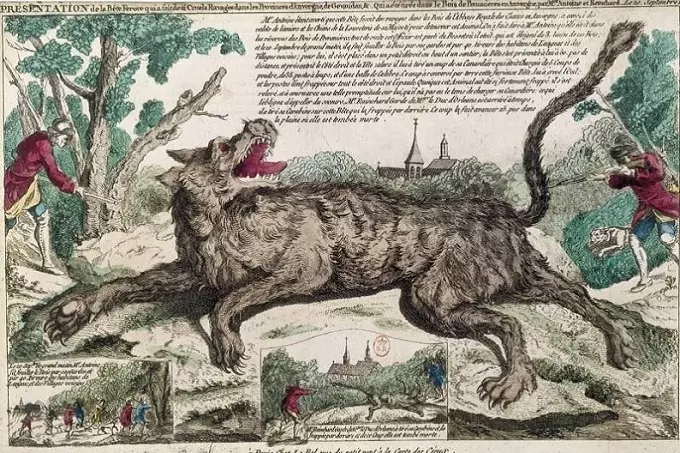
Denneval’s Big Hunt
In January of that same year, 1765, news of a mysterious beast destroying people in the Auvergne reached Louis XV. The King sent in search of the Beast famous Norman hunter Denneval, who by then had on his account more than a thousand personally shot wolves. Together with his son, also a famous hunter, Denneval went to Gévodan.
With them, they brought eight hounds proven in numerous round-ups. For several months, beginning on February 17, 1765, they combed the forests of the Auvergne, without interruption, even during bad weather.
On May 1, 1765, the Gévaudan Beast was still found, and even wounded, but it again managed to evade pursuit.
The Wolf of Chazet
In June 1765, Louis XV sent François Antoine de Boter, Lieutenant of the Hunt, who had the court title of “bearer of the royal arquebus”, to replace Denneval. The King’s lackey, trying to justify his high confidence and using “administrative resources,” attracted a huge number of people to the hunt for the Beast. Thus, 117 soldiers and 600 locals took part in the raid held on August 9, 1765. About 1200 wolves were killed in three months, but the Beast remained elusive.
Finally, on September 20, 1765, dogs chased out a huge wolf, almost twice as big as usual, which was shot, and several strips of red matter were found in its stomach, which was direct evidence that this wolf was a cannibal.
Boter’s bullet had gone tangentially, barely hitting the Beast. The second bullet, fired by an unknown hunter, struck the monster’s eye. But even after that, the Beast was still alive, and the third shot was decisive.
Boter took the stuffed wolf to Versailles and received the royal reward of 9,400 livres, but since the attacks of the Beast of Gévaudan still continued (by this time, it had begun to attack people even near their homes), the Beast he killed was called the “wolf of Chazet”.
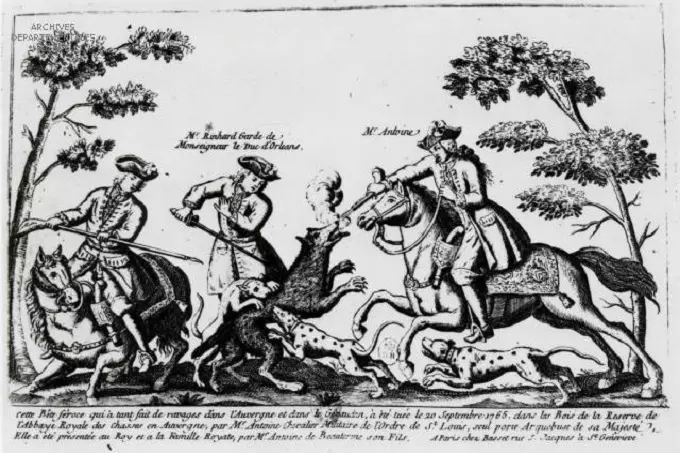
On November 1, 1766, the attacks of the Beast suddenly ceased, nothing was heard of him for 122 days, and the people, at last, breathed a sigh of relief, believing that this nightmare was over. But on March 2, the Beast reappeared in the forests of the Gadwall, and attacks became regular once more.
The Killing of the Beast
The hunt for the Beast was now led by the Comte d’Apchet, whose son, as we remember, was one of the first victims of the Beast. Success was achieved on June 19, 1767, when one of the participants in the raid, which involved about 300 people – Jean Chastel – managed to shoot the Beast.
Inspection and dissection of the monster somewhat disappointed the hunters: as it often happens, it turned out that “fear has many eyes” and “the devil is not as terrible as he is painted”. It turned out that the length of the Beast from head to tail – was “only” 1 meter (the size of the wolf from Chase, as we remember – 1 m.70 cm) but the animal, in general, fit the descriptions.
The Beast had a disproportionately large head with huge fangs and heavy jaws, disproportionately long forelegs, its coat was gray with reddish tinges, and there were several black stripes on the sides and at the base of the tail. The body of the Beast was covered with scars, the royal notary had three pellets in its right thigh joint, and the forearm of a recently missing girl was found in its stomach.
There was no reward from the King or the official authorities, the grateful people of the province organized a fundraiser and managed to pay 72 livres to Chastel.
To reassure the people, the Beast’s carcass was long taken around the Gévaudan, and then, after making an effigy of it, it was delivered to the King.
If this scarecrow had been preserved, today, it would be possible to give a completely unequivocal answer to the question that worries all researchers and historians: who was this famous Beast of Gévaudan really? But, alas, there were no skilled taxidermists in Auvergne, and by the time it arrived in Versailles, the effigy began to decompose and was deemed “unfit for consideration” and thrown into the landfill. Therefore, there are more than enough versions about the origin of the Beast and its species affiliation.
At present, the Beast of Gévaudan is a true brand of the province of the same name, on the territory of which there are monuments to both the Beast himself and to de Boter, who hunted him, and to the people who survived his attacks. The museum dedicated to him in the village of Soge is visited by thousands of tourists worldwide.

